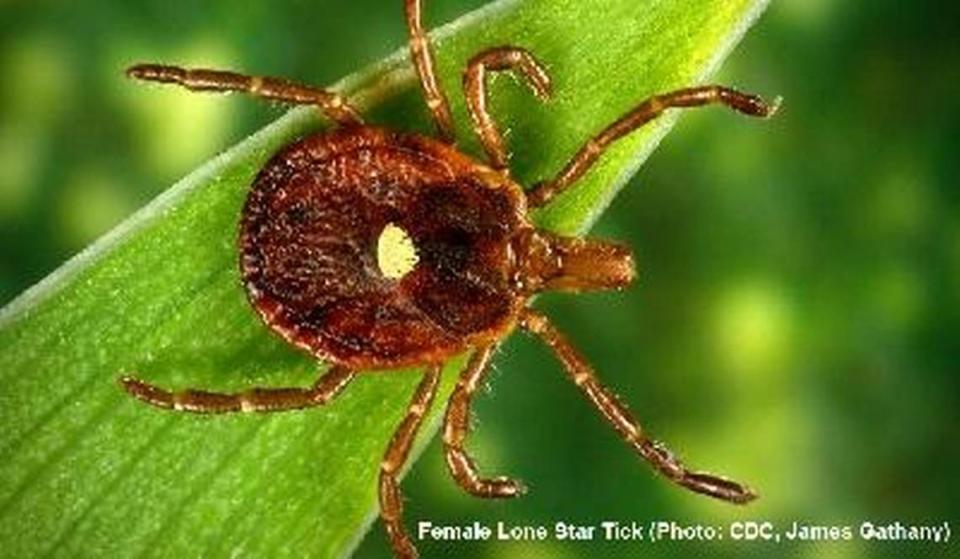It’s tick season in Kansas. But there’s another tiny, biting pest roaming your yard
The end of summer is approaching, but with extreme heat still in the forecast, several summer pests are likely to stick around in your yard into the fall.
Chiggers (scientific name Trombiculidae) and ticks, both arachnids and common in under-managed areas, will remain active as long as warm temperatures and good vegetation persist. But there are quite a few differences between the two pests.
“Chiggers are found throughout Kansas. They’re small, they’re very difficult, almost impossible, to see with the naked eye,” Raymond Cloyd, Ph.D. with Kansas State University’s entomology department, recently told The Eagle.
Young chiggers, called larva, inject saliva into human skin when they bite, which causes a red, itchy reaction.
“They tend to get in areas where the clothing is tight against the skin . . . like socks and shoes,” Cloyd said.
Chiggers, which are a type of mite, usually bite the ankles, lower knees, waist, groin and behind the knees, according to Cleveland Clinic. While a reaction from a chigger bite can be annoying, they aren’t known to carry any diseases.
Ticks, on the other hand, are larger and attach themselves into the skin to feed off animal and human blood. From a health perspective, ticks are more serious than chiggers as they are known to carry a number of diseases, some very serious.
“Chiggers are going to fall off, while ticks are going to stay on you,” Cloyd said.
Here’s what all to know about the two insects and how to avoid an interaction with one this summer.

How to avoid chiggers and ticks this summer
To avoid chiggers and ticks while you are outside this summer, stay away from overgrown areas, Cloyd said.
After spending time outdoors, Cloyd recommends taking a warm shower and throwing all your clothes in the dryer to kill any chiggers that may have hopped on you. Specifically to avoid chiggers, Cloyd recommends applying an insect repellent from the waist down.
To keep the pests out of your yard, the best thing to do is to keep up with yard work, including mowing frequently and trimming brush. Additionally, to keep ticks away, the U.S. Centers for Disease and Prevention recommends:
Using wood chips to create a 3-foot barrier between lawns and wooded areas
Keeping stacks of wood in a dry area
Placing playground equipment, decks and patios in sunny locations
What do chigger bites look like?
If you come inside after a day of doing yard work and see a red, speckled line of spots, those are could be chigger bites.
If you’ve experienced chigger bites before, you might have heard someone tell you to put nail polish over the bite. The idea is chiggers burrow under your skin, and the nail polish is a way to “suffocate” them. But because chiggers don’t burrow, the nail polish does nothing. In fact, it’s best to stay away from harsh chemicals all together, according to the Mississippi State University Extension.
There are ways to treat the itchy bites, however. For treatment, the Cleveland Clinic recommends:
Topical creams
Lotion
Benadryl or other allergy medication
Anti-parasite medications
A cold compress
Cleaning the area with soap and water
What do tick bites look like?
If you notice a tick has attached itself to your skin, it’s important to get it off as soon as possible as some varieties of ticks carry diseases.
According to the Kansas Department of Wildlife and Parks, the three most common types found in the state are the American dog tick, the lone star tick and the blacklegged tick, also called the deer tick. Some diseases commonly carried by ticks include Lyme disease, ehrlichiosis, tularemia and Rocky Mountain spotted fever, the department says.
The CDC advises you remove ticks using fine-tipped tweezers. Don’t twist the tick, instead, use even pressure to remove it by pulling up. After it’s removed, make sure to clean the area with soap and water.
Cloyd recommends visiting a health care provider, as well. You can show the tick to your provider, as some kinds are more likely to carry certain diseases.
The CDC says to watch for symptoms of illness after removing ticks. These symptoms can include:
Rash
Fatigue
Fever
Muscle pain
Joint swelling
Headache

